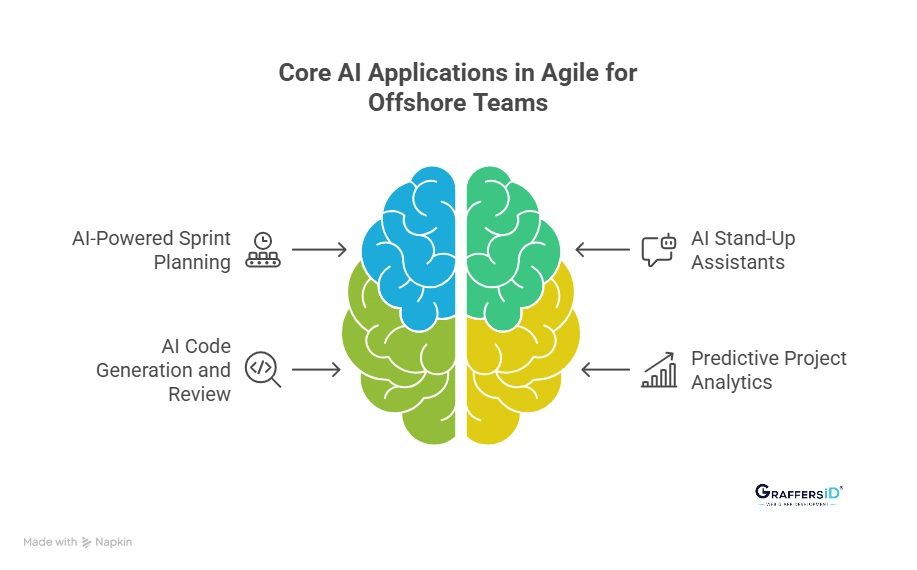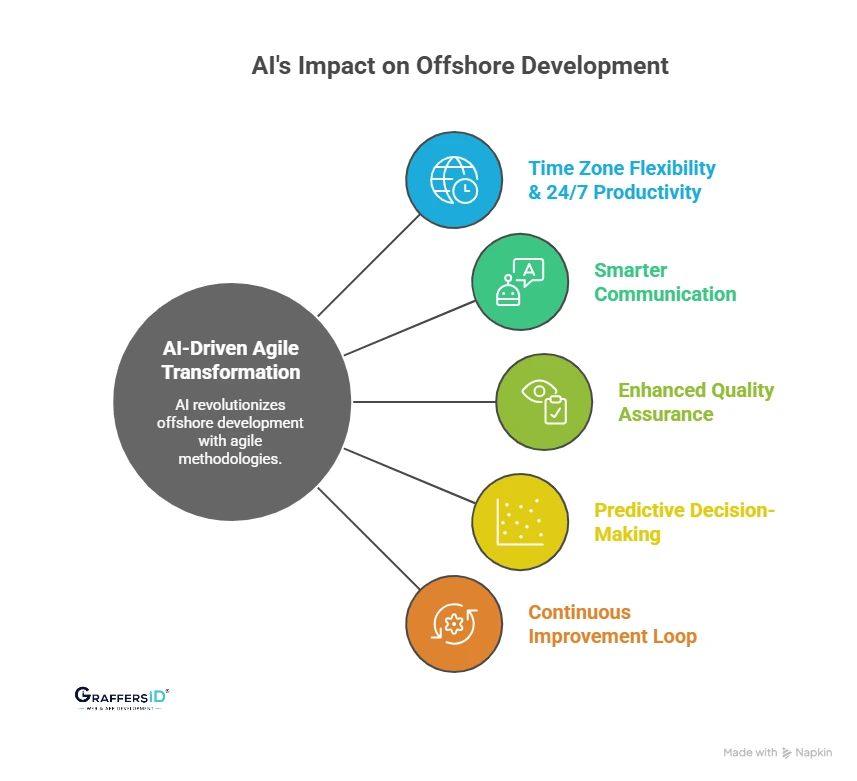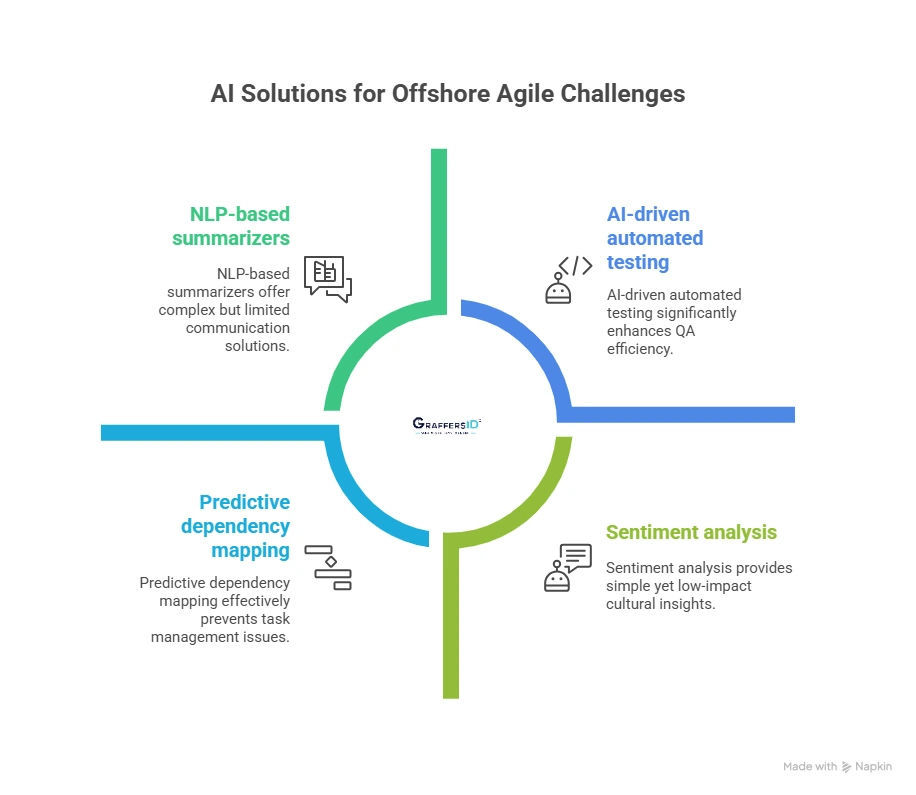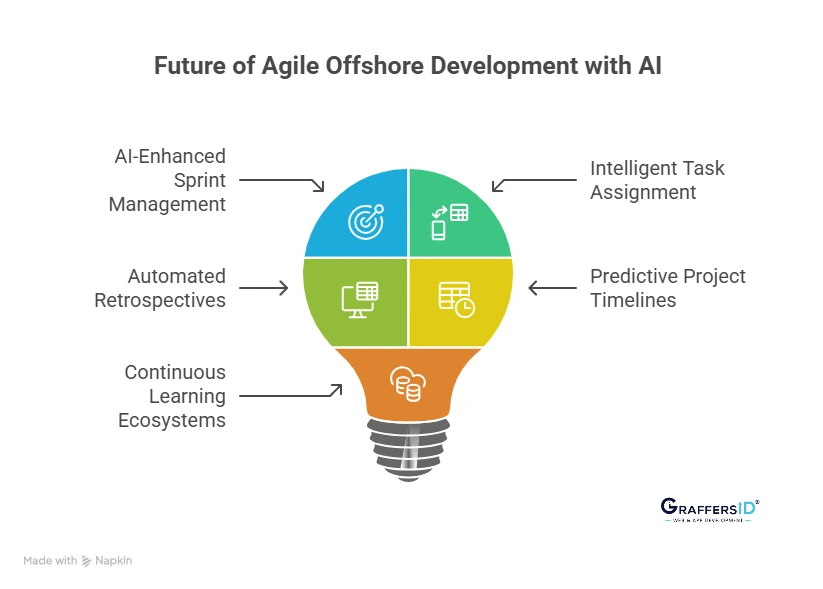In 2026, Agile has evolved beyond a simple project management framework; it’s now an AI-driven, data-intelligent ecosystem shaping how global offshore teams build software.
AI-powered Agile methodologies are redefining how remote developers plan, execute, and deliver projects, enabling faster sprints, smarter estimations, and transparent collaboration across continents.
From predictive sprint planning and automated backlog grooming to AI-powered retrospectives, Agile has become a seamless blend of human creativity and machine intelligence.
For CTOs, CEOs, and product leaders managing distributed teams, this transformation offers more than efficiency; it delivers real-time visibility, enhanced team productivity, and accelerated go-to-market cycles.
If you’re leading an offshore development team in 2026, understanding how AI-driven Agile is reshaping software delivery could be your biggest competitive advantage this year.
What Is AI-Driven Agile in Offshore Software Development?
AI-driven Agile is the integration of artificial intelligence (AI), machine learning (ML), and intelligent automation into traditional Agile practices such as Scrum, Kanban, and Extreme Programming (XP). By combining AI with Agile, offshore software teams can plan, track, and deliver projects more efficiently, reduce manual effort, and improve overall productivity.
Unlike conventional Agile, where metrics like velocity, story points, and task dependencies are manually estimated, AI-driven Agile leverages data from past sprints, team performance, and code quality to predict project outcomes, identify bottlenecks, and optimize workflows. This approach enables offshore teams to make data-driven decisions, respond to changes faster, and maintain high-quality delivery standards.
Core AI Applications in Agile for Offshore Teams

-
AI-Powered Sprint Planning: Tools like ClickUp AI and Jira’s Atlassian Intelligence automatically estimate effort, detect potential bottlenecks, and recommend optimized sprint goals. This reduces planning time and ensures realistic sprint commitments.
-
AI Stand-Up Assistants: Platforms such as Standuply and Geekbot summarize daily updates, track task completion, and provide insights using natural language processing (NLP). Teams receive clear, concise progress reports without the need for long meetings.
-
AI Code Generation and Review: Tools like GitHub Copilot and Amazon CodeWhisperer assist developers by generating boilerplate code, suggesting improvements, and conducting automated code reviews. This speeds up development cycles and improves code quality.
-
Predictive Project Analytics: Platforms such as Forecast.app and Monday.com AI track resource allocation, identify risks, predict delivery delays, and provide actionable insights. These analytics help project managers make informed decisions and reduce surprises in offshore development projects.
By automating repetitive tasks and providing predictive insights, AI-driven Agile allows offshore teams to focus on problem-solving, innovation, and delivering high-value software, rather than getting bogged down in manual tracking or administrative overhead.
Why Offshore Teams Must Use AI-Driven Agile in 2026
Offshore software development teams face unique challenges due to distributed locations, multiple time zones, language differences, and cultural diversity. Traditional Agile practices improve collaboration and adaptability, but integrating AI into Agile takes offshore development to the next level by ensuring continuity, transparency, and intelligent automation across globally distributed teams.
Key Reasons AI-Driven Agile Is Transforming Offshore Development
Here’s how AI-driven Agile is transforming offshore development in 2026:

1. Time Zone Flexibility & 24/7 Productivity: AI tools handle asynchronous updates, summarize progress overnight, and flag blockers before the next workday begins, keeping the project moving 24/7.
2. Smarter Communication: Generative AI assistants translate messages, summarize sprint reviews, and standardize documentation, minimizing friction in global teams.
3. Enhanced Quality Assurance: AI testing tools like Testim.io and Mabl automate regression testing and predict high-risk areas, improving release quality across multiple development centers.
4. Predictive Decision-Making: AI dashboards analyze sprint data, velocity trends, and team productivity to help project managers make data-driven decisions.
5. Continuous Improvement Loop: With AI analyzing retrospectives, common blockers, and performance metrics, offshore teams can continuously adapt and evolve.
Common Challenges in Offshore Agile Development and How AI Fixes Them
Offshore Agile teams face unique challenges due to geographical distribution, cultural differences, and complex workflows. Leveraging AI tools can address these issues effectively, improving productivity, communication, and delivery quality.

1. Communication Barriers
-
Traditional Problem: Misaligned updates due to cultural and time-zone differences.
-
AI Solution: NLP-based summarizers and translation tools like DeepL or ChatGPT-powered assistants provide context-aware summaries and multilingual communication.
2. Dependency & Task Management
-
Traditional Problem: Missed deadlines due to task dependencies.
-
AI Solution: Predictive dependency mapping using tools like Wrike AI identifies potential blockers before they occur.
3. Quality Assurance
-
Traditional Problem: Manual testing delays and limited visibility across distributed teams.
-
AI Solution: AI-driven automated testing ensures faster bug detection, improves release readiness, and enhances QA collaboration.
4. Cultural Differences
-
Traditional Problem: Misunderstandings affecting collaboration.
-
AI Solution: Sentiment analysis and communication analytics help project leads maintain team harmony and engagement.
Read More: What is Generative AI and How Does It Affect Software Development?
Key Benefits of Using AI-Driven Agile in Offshore Software Development
1. Faster Project Delivery: AI automation reduces time spent on manual sprint planning, task updates, and QA processes, allowing offshore teams to deliver products up to 40% faster.
2. Improved Product Quality: AI-powered testing ensures consistent standards, catching defects early and maintaining higher code reliability.
3. Data-Driven Decision-Making: Instead of relying on gut instinct, AI analytics provide evidence-based insights on productivity, risks, and client satisfaction.
4. 24/7 Productivity Across Global Time Zones: With AI managing asynchronous workflows, your offshore team’s progress never stops, even when one region is offline.
5. Enhanced Transparency and Client Trust: AI reports provide real-time visibility into sprint progress, fostering trust between offshore teams and clients.
Future of Agile Offshore Development: Human-AI Collaboration
By 2026, offshore Agile development is evolving into a human-AI collaborative ecosystem. Teams that integrate AI into Agile practices gain significant advantages in efficiency, decision-making, and innovation. Key trends shaping this future include:

-
AI-Enhanced Sprint Management: AI tools can autonomously plan sprints, estimate effort, and predict potential blockers based on historical data and team performance.
-
Intelligent Task Assignment: AI can analyze individual developer expertise, workload, and past performance to assign tasks optimally, ensuring faster delivery and higher quality outcomes.
-
Automated Retrospectives: AI-driven retrospectives can summarize team performance, identify recurring challenges, and suggest actionable improvements without manual effort.
-
Predictive Project Timelines: By analyzing patterns in velocity, dependencies, and code quality, AI can forecast project completion and adjust timelines proactively, minimizing delays.
-
Continuous Learning Ecosystems: Combining human creativity with AI insights, offshore teams can evolve into self-improving systems that continuously optimize workflows, collaboration, and product quality.
This blend of AI automation and human expertise represents the next frontier of global software development, enabling organizations to deliver innovative solutions faster, reduce risk, and maintain a competitive edge in 2026 and beyond.
Conclusion: Unlock the Future of Offshore Development with AI-Driven Agile
Agile methodologies have always thrived on adaptability, collaboration, and continuous improvement. In 2026, integrating AI into Agile has transformed offshore software development into a smarter, faster, and more resilient process.
By combining human expertise with intelligent automation, global teams can deliver high-quality software at unprecedented speed, respond to evolving market demands, and maintain real-time visibility into project performance. AI-driven Agile empowers organizations to reduce risks, optimize workflows, and achieve predictable outcomes, making it the strategic advantage every CTO, CEO, and product leader needs.
If your enterprise aims to stay competitive in a rapidly evolving tech landscape, embracing AI-powered Agile for offshore teams is no longer optional; it’s essential for accelerating innovation and scaling success.
Transform your offshore development with high-performing, AI-enabled Agile teams. GraffersID helps global companies build smarter development workflows, leverage AI-powered automation, and deliver market-ready products faster.





